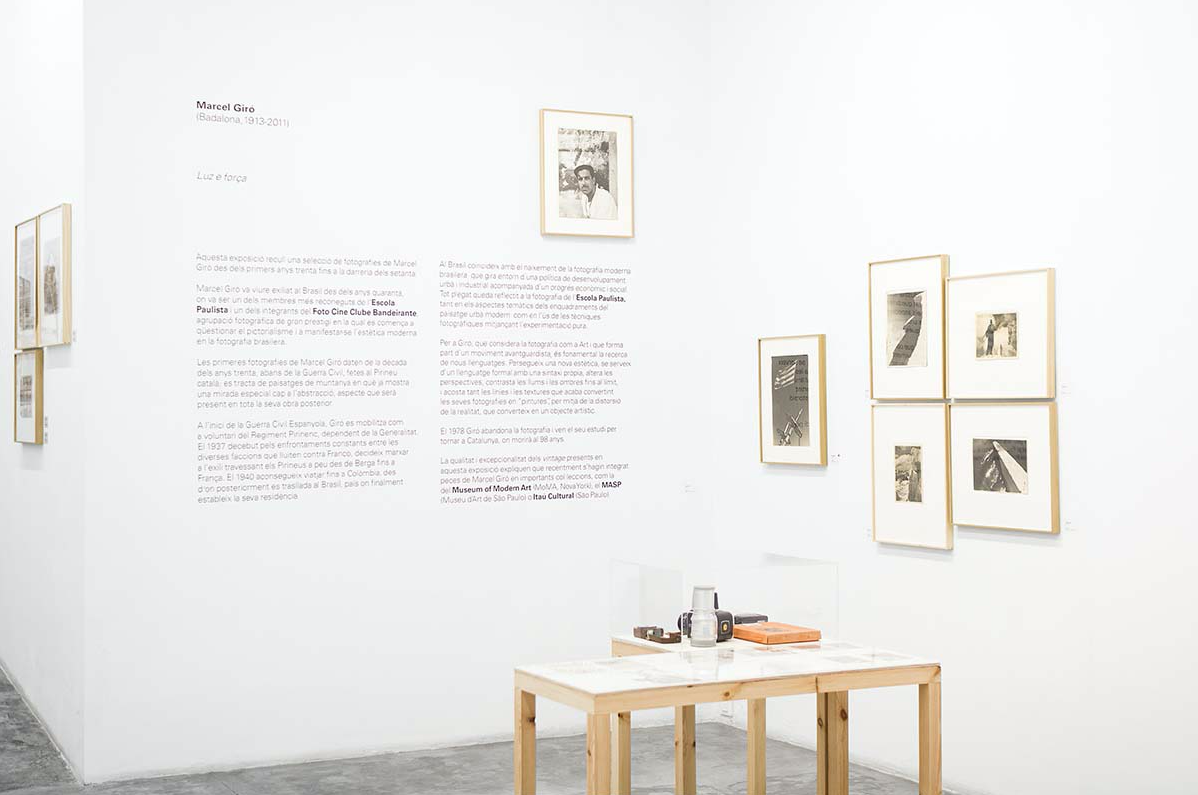Marcel Giró – LUZ E FORÇA

Marcel Giró – LUZ E FORÇA
Marcel Giró (Badalona, Spain, 1913-2011) sought exile in Brazil in the 1940s. Although relatively unknown in Spain until now, he was a prominent exponent of the Brazilian ‘Escola Paulista’ and a member, along with German Lorca, Gaspar Gasparian and Thomas Farkas, among others, of the Foto Cine Clube Bandeirante, a movement founded in 1939 which, in the mid 40s, began to challenge pictorialism and inject a modern aesthetic to Brazilian photography.
The exhibition includes unpublished prints from the pictorial 1930s that already betrayed an interest in composition, a fundamental aspect that became a constant of Giró’s later output.
In 1950, the photographers involved in the Foto Cine Clube Bandeirante began to throw off the isolation that had surrounded Brazilian photography until then and assert photography as an artistic expression in its own right, researching new frames, geometries and interaction between light and dark. Thus was born the Escola Paulista, as the critics of contemporary specialised publications called this new style of photography emerging from the Foto Cine Clube Bandeirante. And thus was born modern Brazilian photography.
At the same time, a profound transformation of socio-cultural thought and reality was taking place, reflecting the country’s attending urban and industrial development and social and economic progress. All this was captured by the Escola Paulista, as can be seen by its treatment of theme, composition, and its experimentation in technique.
Thanks to the indomitable and avant-garde spirit of its exponents, the Escola Paulista transformed the identity of Sao Paulo’s urban mapping, glimpsed in eccentric new perspectives, which, forming compositions of lines, closed frames and chiaroscuro, ushered in a fragmentary and ‘pastless’ city; in essence, a new Sao Paulo. Marcel Giró shows up the ambiguities between figuration and abstraction. His photographs confound perception by playing with the scale of the objects photographed or emphasising certain graphic elements.
With surprising formal unity, hard shadow and cold geometry are juxtaposed with the greatest delicacy. Indeed, what enriches Giró’s work is the ambiguity created by the interplay of figuration and abstraction.
For Giró, a member of an avant-garde movement, the search for new languages is fundamental. He pursues a new aesthetic, employs a formal language that possesses its own syntax, alters perspectives, takes the contrast between light and dark to the limit, merging lines and textures to the point that his photographs seem to turn into “paintings”, distorting reality in the process and converting it into an artistic object.
The quality and exceptional nature of Marcel Giró’s 30 x 40 cm vintage prints have secured him a place in the collections of the Museum of Modern Art (MoMA, New York), MASP (Museu de Arte de São Paulo), Itaú Cultural (São Paulo) and the Museu Nacional d’Art de Catalunya (MNAC, Barcelona). Persigue una nueva estética, se sirve de un lenguaje formal con una sintaxis propia, altera las perspectivas, contrasta las luces y las sombras hasta el límite, aproximando tanto las líneas y las texturas, para acabar convirtiendo sus fotografías en “pinturas”, bajo la distorsión de la realidad, convertida así en objeto artístico.
En 1978 Giró abandona la fotografía y vende su estudio para regresar a Cataluña, donde moriría a los 98 años.
A la calidad y excepcionalidad de los vintage presentes en esta exposición se debe que recientemente se hayan integrado piezas de Marcel Giró en importantes colecciones, como la del Museum of Modern Art (MoMA, Nueva York), el MASP (Museu de Arte de São Paulo) o Itaú Cultural (São Paulo).